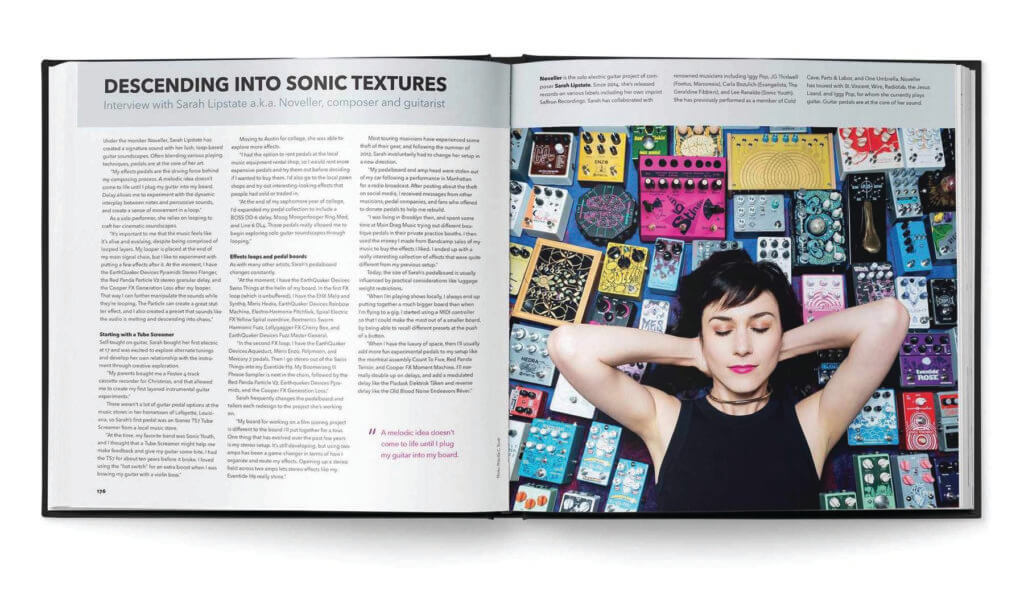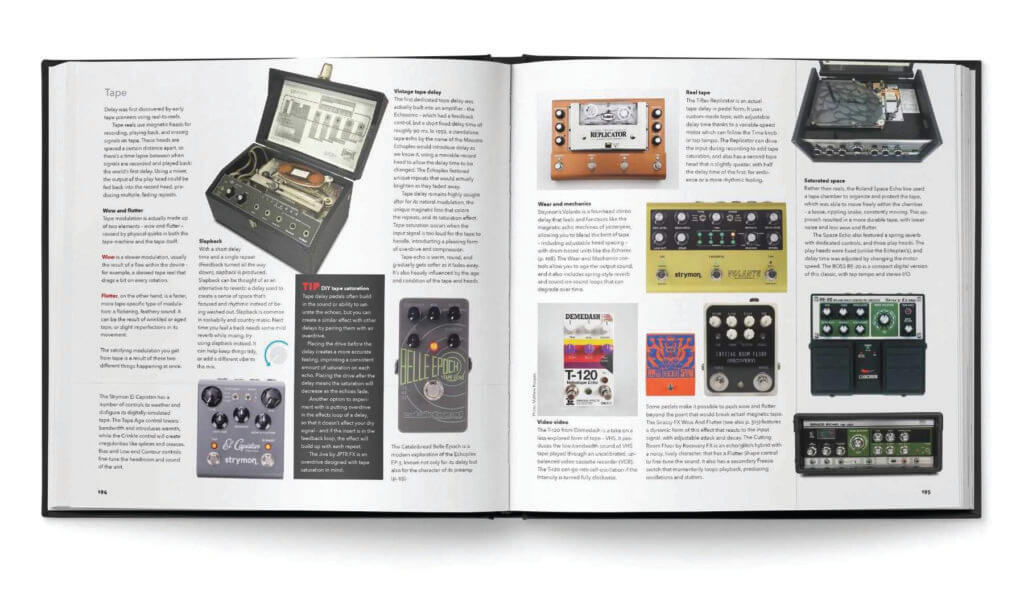Guitar related books are plentiful, and many have become the respected bibles for the instruments they have covered. They’re part informational/reference items, but the glossy pictures make them interesting and inspiring to read. Considering effect pedals have really become part of the musical landscape, it’s no surprise that books on them are hitting the shelves. Pedal Crush by Kim Bjorn and Scott Harper hits all the right notes, covering information, interviews, reference, and inspiration in its pages.
Starting off, this isn’t just about pedals; while it is the focus, it also covers how pedals fit into a player’s overall setup and sound. Ever wonder what a transistor actually does in a circuit? Well, they get into the components and their functions, but not so heavy that it’s a textbook, and not dumbed down like a Sesame Street primer, but simple, concise definitions. A complete glossary of terms is also located in the back to fully cover terms that always seem to get thrown around like “dynamic range” or even fully defined ones like “decibel.”

Ever read a pedal description and scratch your head? Yeah, this helps decode that. The resource areas also cover other pedal books, DIY books (for the inspired pedal makers), forums, YouTube sites, and some artist and pedal makers.
The good thing with the modern wave of pedal goodness is the availability of the pedal makers, and their ability to share their backgrounds. Interviews with Josh Scott of JHS Pedals, Zachary Vex of Zvex Effects, Tom Cram of Spiral Electric FX all relay excellent stories on their journeys as makers and musicians, among other talented pedal creators. YouTubers like Andy Martin also share what they’ve learned over the years of doing hundreds of demo videos.
It’s quite expansive with information on multi-effect units, profilers, modelers, pedalboards, power supplies, cables, amp simulation and software. But the pedals always remain the main focus. It’s not quite a complete pedal database, but does cover the most popular ones, from Boss’s DS-1 to the elusive Klon Centaur, and everything in between.

The only downside is that there’s not a comprehensive index, such as: want to see what page(s) may mention a Boss Terra Echo, or a RAT, or quickly find a mention of a Boss vibrato in the Nels Cline interview, sorry. But it is inspirational on another level, peeling through the pages and finding variations of effects, while getting a bit of an education at the same time.
Overall it’s a well-done book, with nice high-resolution images, and clear, while not overpowering explanations. Considering pedals are kind of a simple way to change an instrument’s sound, they dug in deep to show that for the player who’s become obsessed with stompboxes, it’s not a futile journey, but one that has a lot of possibilities. For the player who might get overwhelmed by the options that pedals bring, this can de-mystify a lot of aspects and make using these as practical tools more approachable in creating music.

FOR MORE INFO, PLEASE VISIT https://bjooks.com
